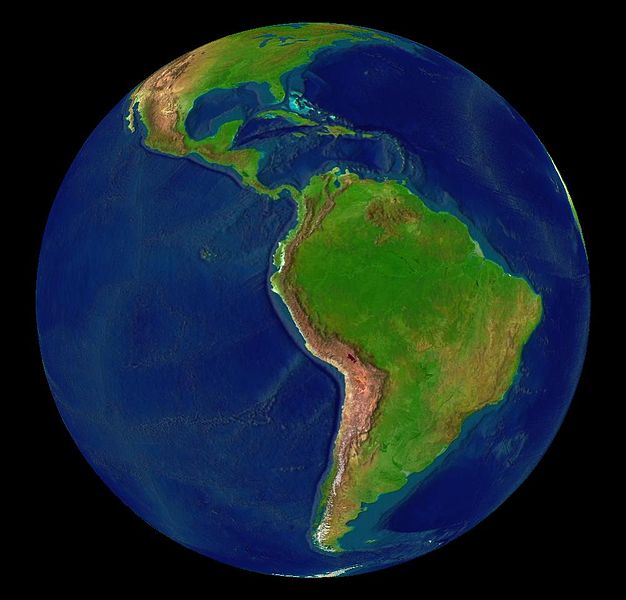The Pacific Alliance –an innovative and dynamic trade and investment initiative– is gathering strength in Latin America. The four-country alliance, established in 2011, represents a new generation in regional economic cooperation.
Observers in Latin America and other parts of the world may ask why this latest effort at integration and free trade will be any different from the past.
Their skepticism is justified. Earlier regional trade pacts –typically lacking a realistic economic foundation or a true commitment to change– have failed to prosper.
The Pacific Alliance –which currently includes Chile, Colombia, Mexico and Peru– is different. It represents a new breed of Latin American free trade agreements that seeks to achieve real economic integration and gradually move toward the free circulation of goods, services, capital and people among its members.
In contrast to other, inward-looking regional integration efforts, the Pacific Alliance looks outward and plans to use the economic and financial energy of its partners to develop new ties with the rest of the world, in particular the Asia-Pacific region.
The Pacific Alliance is built on a solid foundation. It is made up of like-minded governments that believe open markets and free trade are the way to promote economic growth and development. The members recognize that trading among themselves is simply not a formula for sustainable long-term growth. They want to attract foreign capital, not block it out.
This open philosophy is particularly important in view of weaker prices for raw materials, the economic slowdown in China and the urgent need for Latin America to boost exports of higher value-added manufactured goods.
The Pacific Alliance is already a significant economic force. It has a combined market of 212 million people and a GDP of over $2 trillion, accounting for 36% of Latin America’s total economic output and about half of the region’s exports.
Together, the four economies rank as the world’s eighth largest economic block. Moreover, their combined GDP growth outperforms the regional average, their growth outlook is positive and they attract more than 40% of the direct foreign investment that flows into the region.
Since creating the alliance three years ago, member states have made steady progress in meeting the group’s goals. The partners have lifted visa requirements for nationals traveling between the four nations, voted to eliminate tariffs on 92% of the products they trade and are moving to consolidate their diplomatic offices in some parts of the world.
In addition, two years before the alliance was founded, Chile, Peru and Colombia took a bold step and began integrating their stock markets. In 2009, they established MILA –the Integrated Latin American Market or Mercado Integrado Latinoamericano– which began operating in 2011. Mexico, the largest economy in the group, recently formalized its entry into MILA, signaling its commitment to the Pacific Alliance integration process.
This move offers huge potential for investors in the region and in other parts of the world.
Other neighbors are already knocking on the alliance’s door. Costa Rica and Panama are moving to join, and 30 other countries –including Canada and the U.S. – are observers. Canada, which has free trade agreements with all four alliance partners, would be a natural fit, especially because of its significant investments in the mining and energy sectors of these countries.
MILA – A magnet for regional and international capital
Private equity firms, such as Bricapital, see a bright future for MILA. The integration of stock markets represents a giant step for local companies, pension funds and other institutional investors, both domestic and international. It will give investors and enterprises alike a greater supply of liquidity, securities, issuers, increased diversification and much larger sources of funding.
With the inclusion of Mexico, MILA’s combined market capitalization will be an estimated $1.08 trillion, close to that of Brazil’s Bovespa stock exchange.
Market integration among the alliance’s four partners will offer significant new opportunities for local pension funds to diversify their investments.
Each of the member nations places strict limits of how much their pension funds can invest internationally. But with MILA, the idea currently being considered is that investments in any of the MILA countries will be treatedas domestic.
This means that promising businesses in these markets will soon have access to a much deeper investment pool. The pension funds in Chile, Peru, Mexico and Colombia represent a total capital pool of $455 billion.
A larger, pan-regional stock market will attract new investment, providing additional capital and liquidity and improved competitiveness and innovation. In addition, MILA is expected to boost asset values, provide investors with many more investment options and exit opportunities. Those things spell more jobs and regional economic development growth, as well.
At Bricapital, we believe that the Pacific Alliance and MILA are generating new and exciting investment opportunities for the region, and will offer Latin America a brighter and more prosperous future.
Opinion column by Yrene Tamayo, Managing Director and Executive VP of Bricapital





 For Fórmate a Fondo
For Fórmate a Fondo